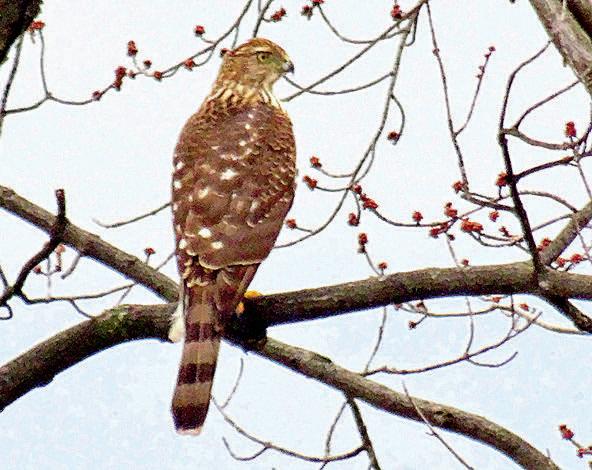
3 minute read
Wildlife Wonders
TIME TO HEAD SOUTH
By Cheryl Conley
With temperatures still soaring in our area, it’s hard to think about fall, but birds know it’s time for their fall migration. So, exactly how do they know? There are a number of factors. One way is the angle of the sun. Days are growing shorter, and we have fewer hours of daylight. Summer crops are becoming scarce, and less food is available. In the fall, baby birds are now mature enough to be on their own, so Mom no longer has to tend to the youngsters. The location of the birds is important as well. Arctic birds may begin migrating as early as July, while those closer to the equator start migrating in late September.

Although rare in the Greater Houston area, it is not unheard of to see a Broad-winged hawk (Buteo platypterus). These raptors have chunky bodies and a small reddish-brown head. Their tails are black and white striped, similar to a raccoon’s tail. The undersides of the wings are bordered in dark brown. These hawks live in forests and spend the majority of their time under the canopy of the trees. Here they look for small animals to hunt.
The female typically lays 2 or 3 eggs, and the incubation is almost exclusively taken care of by Mom. The male will bring food to her while she’s tending to the eggs. Mom takes care of the young for the first 1 to 2 weeks after hatching, and the male continues to deliver food for her and the young. Mom gets a break once the babies are a little older when Dad pitches in. At 5 to 6 weeks, the young are able to fly.
Almost all broad-winged hawks migrate in the fall to Central and South America. A great place to see these raptors as they make their way south is at Smith Point on Galveston Bay’s eastern shore. Smith Point features a land form that funnels the birds into a migration corridor. At peak migration periods, thousands of birds can be seen in one day. Broad-winged hawks make up approximately 70% of the birds traveling this route.
Beginning on August 15th and running through November 30th , the Gulf Coast Bird Observatory keeps a daily raptor count at Smith Point called the Smith Point Hawk Watch. A watch tower has been constructed for this purpose and is open to the public from 8am to 4pm. Staff and volunteers are at the watch tower to talk with visitors and answer questions. There are scopes and binoculars so visitors can get a better view of the birds. This year marks the 25th anniversary of the raptor counting and a celebration is planned for October 2nd from 10am to 1pm. For more information, you can visit the Gulf Coast Bird Observatory website or call 979-480-0999 for more information. • FREE Estimates • Locally Owned and Fully Insured • 10 Year Labor Warranty • Military & Senior Discounts • Residential or Commercial • Insurance Claims Welcome • Roof Repairs (Architectural) • Hardie Siding • Gutter and Down Spout Repairs • Fascia & Soffit Repair • Exterior Painting • Sheetrock Work • Emergency Repairs 24/7 • References Available Upon Request 281-513-6263
Keith@onlyonehighlander.com

Real Volunteers Real Results
Striving to prevent accidental poisoning through its Poison Information-Always Ask™ program, Assistance League® ...

• Touches over 4000 Kindergarten and pre-K students annually • Gives either a classroom presentation, or an optional video
• Provides take-home information packets to families
If helping children is your passion, Join Us! Call Sandra Katri at 936-760-1511
126 N. San Jacinto Street • Conroe, TX 77301 www.assistanceleague.org/montgomery-county





